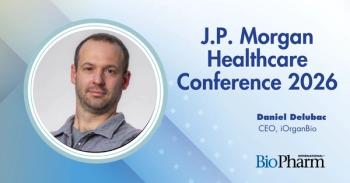
- BioPharm International-02-01-2019
- Volume 32
- Issue 2
As Drug Spending Slows, Investment Must Pick Up
Biosimilars, pricing strategies, and technology investments will influence growth in spending on drugs.
An annual report from the IQVIA Institute for Human Data Science Study (1) predicts slower growth in drug spending, outlines the need for technology adoption, and warns about implications for emerging therapies and policy decisions. The report, issued in late January 2019, noted that global drug spending reached $1.2 trillion in 2018 and is expected to top $1.5 trillion by 2023. While spending is predicted to continue to grow, the increase will be at a slower pace than previous years. The projected 2023 spending level, up 50% from 2016, will be accomplished despite lower growth of 3–6% on an annual compound basis compared to 6.3% over the past five years.
The United States and pharmerging markets will drive growth over the next five years with 4–7% and 5–8% compound annual growth, respectively, the study reports. However, growth in the top-five European markets will be 1–4%; Japan’s predicted topline growth is -3–0%. Growth in China is expected to slow to 3–6%.
Through 2023, IQVIA expects FDA to approve, on average, 54 novel drugs per year, up from an average of 46 drugs in the past five years. The annual average spending in developed markets on new brands is expected to rise slightly to $45.8 billion in the next five years.
Patent expirations, generic and new drug competition, and drug pricing pressures will contribute to slower growth, however. Competition from biosimilars in 2023 is predicted to be three times the level it is today; and half of spending on medicines will be for specialty drug products. Net manufacturer revenue will grow at 2–3% in 2019, down from a high of 10.3% in 2014.
The loss of exclusivity of branded drug products is forecasted to be $31.5 billion in developed markets in 2019; the forecast impact through 2023 is $121 billion, including almost $17 billion for biologics. In the US, the impact will be $95 billion through 2023, with $15.8 billion for biologics.
The US will continue to lag other developed markets in adoption of biosimilars; however, the report authors expect US policymakers to push for more biosimilar adoption by addressing reimbursement policies, perhaps in time for adalimumab biosimilars in 2023.
Influential factors
The report also identified key factors that will influence healthcare costs including the use of machine learning and artificial intelligence to identify drug targets and monitor clinical trials, use of real-world evidence in clinical trials, a greater voice for patients in the development and administration of drugs, and pricing reforms. Other predictions include the following:
Large pharma companies will increase investment in technologies and operational efficiencies.
Emerging biopharma companies will represent a greater share of new drug launches. Big pharma companies will partner will smaller companies rather than acquiring them.
Next-generation therapeutics will offer clinical benefits; however, high list prices, small patient populations, bioethical questions surrounding gene editing, and limited manufacturing capacities may dampen growth, resulting in only five to eight approvals in the next five years.
New approaches to-and investment in-treatments for neglected tropical diseases will be sponsored by philanthropic organizations.
Reference
1. M. Aitken, et. al., The Global Use of Medicine in 2019 and Outlook to 2023: Forecasts and Areas to Watch, IQVIA, January 2019.
Article Details
BioPharm International
Vol. 32, No. 2
February 2019
Page: 6
Citation
When referring to this article, please cite it as R. Peters, “As Drug Spending Slows, Investment Must Pick Up," BioPharm International 32 (2) 2019.
Articles in this issue
almost 7 years ago
Small-Batch Aseptic Fill/Finish Systemalmost 7 years ago
Supply Chain Challenges for Single-Use Systemsalmost 7 years ago
Sustainability in Disposal of Single-Use Systemsalmost 7 years ago
Sterile Boot Coversalmost 7 years ago
Innovations Maintain the Cold Chainalmost 7 years ago
What’s New in Lab Automationalmost 7 years ago
Automation in the Lab: What to Consideralmost 7 years ago
Effective Root Cause Determinationalmost 7 years ago
FDA Promotes Quality Standards to Reduce Shortagesalmost 7 years ago
Taking Stock of Biologic Fill/Finish Best PracticesNewsletter
Stay at the forefront of biopharmaceutical innovation—subscribe to BioPharm International for expert insights on drug development, manufacturing, compliance, and more.




